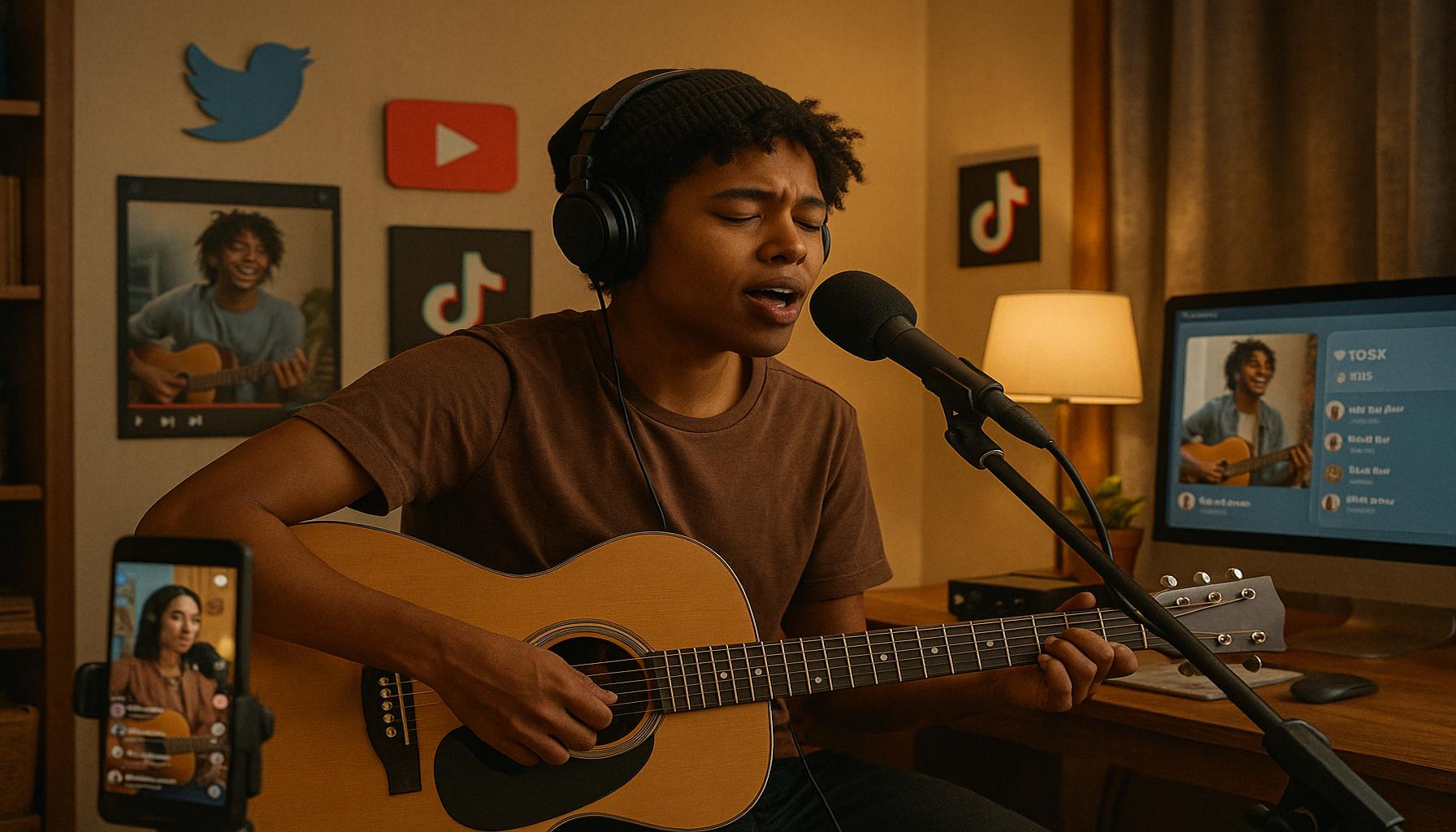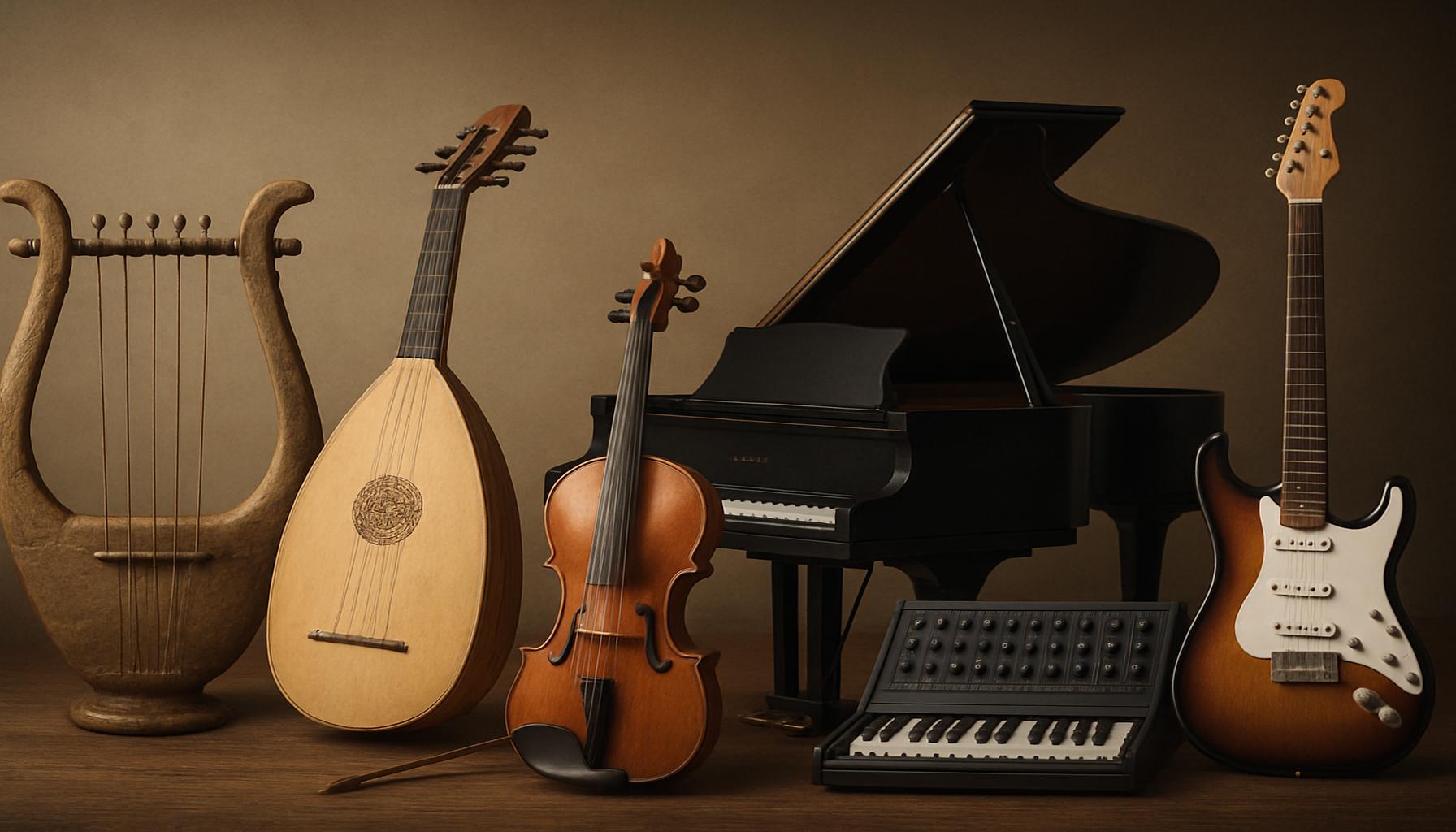Music as a Form of Therapy: Benefits of Music Therapy on Creativity and Well-Being

Understanding Music Therapy
Music has long been recognized as a profound medium for conveying emotions, transcending cultural and linguistic barriers. More recently, the field of music therapy has gained traction as a structured approach to harness the therapeutic potential of music. This practice involves trained music therapists who utilize music interventions to address physical, emotional, cognitive, and social needs of individuals. Through the creation and engagement with music, patients can find relief and connection that traditional therapies might not provide.
Key Benefits of Music Therapy
The integration of music into therapeutic contexts has shown remarkable benefits that span a broad spectrum of mental health issues and developmental challenges. Some of the most notable advantages include:
- Stress reduction: Research indicates that listening to soothing music can lower cortisol levels, the body’s stress hormone, thereby leading to decreased anxiety and enhanced relaxation. For example, many hospitals now play calming music in waiting rooms and recovery wards to ease patients’ nerves.
- Enhanced creativity: Engaging in musical activities like improvisation or songwriting can stimulate the brain’s right hemisphere, which is linked to creative thinking. Many institutions, such as schools and rehabilitation centers, have incorporated music programs encouraging students and patients alike to explore their creative potentials.
- Improved emotional expression: Music provides a language for those who find it challenging to share their feelings verbally. It can be particularly beneficial for children with autism spectrum disorder, who may struggle with communication. In these cases, therapists create personalized playlists or sessions that reflect the emotions the child finds difficult to articulate.
Techniques Employed in Music Therapy
Music therapists deploy a variety of techniques tailored to the needs of individuals. Some of the prominent methods include:
- Active listening: This process involves not just hearing music but actively engaging with it. Clients are encouraged to reflect on the emotions the music elicits, facilitating deeper insights into their emotional states.
- Songwriting: Through crafting lyrics and melodies, individuals can articulate their feelings and experiences in a creative format that feels safe and reassuring. This can serve as a powerful outlet for self-expression and personal storytelling.
- Improvisation: By allowing clients to create music spontaneously, therapists can foster a sense of freedom and spontaneity. This method often encourages emotional release and can aid in building confidence as individuals explore their musical and emotional landscapes.
Exploring the Future of Music Therapy
As we continue to uncover the multifaceted benefits of music therapy, its applications are becoming increasingly relevant in various settings—from schools tackling behavioral issues to therapeutic practices for veterans coping with PTSD. Innovations in technology, such as apps and virtual therapy sessions, are also making music therapy more accessible to a wider audience. The ongoing research is essential in establishing more evidence-based practices, enabling us to explore how music can further influence and enhance creativity and well-being in our daily lives.
In conclusion, the realm of music therapy provides a fascinating insight into how a seemingly simple art form can foster significant healing and personal growth. By diving deeper into this therapeutic practice, we can appreciate the harmonious relationship between music and mental health, empowering us to navigate life’s challenges with more grace and resilience.

DISCOVER MORE: Click here to dive into the world of artisan baking
The Therapeutic Science Behind Music
As research into music therapy continues to flourish, the intricate relationship between music and the brain reveals itself as a fascinating area of study. Neuroscientists and therapists alike are uncovering that music not only influences emotions but also sparks neural connections that can lead to enhanced creativity and improved mental well-being. The interplay between auditory stimuli and brain function has profound implications for individuals seeking therapeutic avenues to express themselves and heal.
One of the key mechanisms through which music fosters healing is through its profound ability to evoke emotional responses. This response can result from the rhythm, melody, or even the lyrics of a song, which can unlock memories or feelings that individuals may find challenging to articulate. According to the American Music Therapy Association, music therapy can help in reducing symptoms of anxiety and depression, while simultaneously promoting positive emotional expression, thereby enhancing overall mental health.
Empirical Evidence Supporting Benefits
Numerous studies corroborate the impact of music therapy on various aspects of mental health and creativity:
- Enhanced cognitive functioning: Research has shown that music can stimulate cognitive activities, particularly in older adults. A study published in the journal Neurology found that participants who engaged in music-related activities exhibited a slower rate of cognitive decline compared to those who did not.
- Improved social skills: Collaborative musical activities, such as group drumming or choir singing, can foster socialization and enhance social skills, particularly in children and adolescents. These settings provide safe spaces for individuals to connect with others, promoting inclusivity and teamwork.
- Facilitation of personal growth: Music therapy can act as a catalyst for self-discovery and personal growth. Clients often express feelings of empowerment and self-acceptance through creative outlets, leading to increased resilience and a more positive self-image.
Furthermore, music therapy has been notably effective in specific populations. For example, individuals with post-traumatic stress disorder (PTSD) have benefitted from musical interventions, which provide them with tools to cope with painful memories and emotions. The rhythm and melody create a safe space for expressing trauma, enabling therapeutic breakthroughs that other forms of therapy sometimes struggle to achieve.
Accessibility and Innovation in Music Therapy
Another exciting dimension of music therapy is its growing accessibility, especially in the United States. With the rise of technology, innovative applications are being developed that provide therapeutic music experiences such as guided playlists designed for relaxation or apps that encourage musical creation. These advancements are making music therapy available to a broader audience, including those who may not have the resources for traditional therapy.
As we delve deeper into the benefits of music therapy on creativity and well-being, it’s crucial to recognize its potential in promoting healing in diverse contexts. The ongoing expansion of music therapy practices and research can pave the way for more people to unlock their creative potential while reaping the mental health benefits that music provides.
Music therapy has gained recognition as a powerful tool for enhancing creativity and fostering emotional well-being. This therapeutic approach leverages the profound impact of music on the brain, influencing mood, behavior, and cognitive processes. Within this realm, practitioners employ various methods, including songwriting, improvisation, and listening activities, to engage clients and cultivate their creative expression.
One area where music therapy shines is in its ability to act as a catalyst for emotional expression. For individuals struggling to convey their feelings, music serves as a universal language that transcends verbal barriers. This creative outlet can facilitate the release of pent-up emotions, providing individuals with a safe space to explore and reflect on their experiences. Studies indicate that engaging in music-making can reduce symptoms of anxiety and depression, leading to improved overall well-being.
Moreover, music therapy encourages social interaction and connection. Group sessions often occur in music therapy environments, where participants collaborate on musical projects. These social engagements can enhance interpersonal skills and alleviate feelings of isolation. The shared experience of creating music fosters a sense of belonging and community, which is crucial for mental health.
Furthermore, the benefits of music therapy extend to improving cognitive functions, particularly in populations such as the elderly or those with neurological disorders. Research suggests that engaging with music can stimulate brain regions associated with memory and learning, enhancing cognitive capacities and supporting mental clarity. This neuroplasticity facilitated by music not only aids in recovery from trauma but also promotes creativity as individuals discover new ways to engage with their thoughts through musical expression.
| Advantages | Impact on Well-Being |
|---|---|
| Emotional Expression | Music acts as a medium for individuals to express their emotions, aiding in emotional processing. |
| Social Interaction | Fosters social skills and community through group music-making activities, reducing feelings of isolation. |
| Cognitive Enhancement | Stimulates brain function and creativity, especially beneficial for the elderly and those with neurological challenges. |
As we delve deeper into the fascinating world of music therapy, it’s evident that its multifaceted benefits extend beyond traditional boundaries, encouraging enhanced creativity and a richer sense of well-being in individuals of all ages. Interested readers may explore more about how music therapy is transforming lives and unlocking creative potentials worldwide.
DISCOVER MORE: Click here to delve into digital art tools
Music Therapy Across Lifespan and Diverse Populations
The advantages of music therapy extend beyond just emotional healing; it also plays a significant role across different age groups and diverse populations. From early childhood to elder care, the utilization of music as a therapeutic tool has shown promise in innovating and enhancing treatment approaches. For instance, in children with developmental disorders, including autism spectrum disorder (ASD), music therapy provides a unique avenue for communication and social interaction. The structured nature of musical activities helps these children develop language skills and express feelings effectively.
According to the American Journal of Music Therapy, children involved in therapeutic music sessions displayed improved behavioral responses, showcasing decreased anxiety and improved social engagement. This improvement is attributed to the multisensory learning environment conducive to music, allowing children to connect emotionally and cognitively with their peers. By integrating music into their learning processes, therapists can significantly enhance their creativity and overall well-being.
Music Therapy in Geriatric Care
Turning to the geriatric population, music therapy has emerged as a vital component in managing conditions such as dementia and Alzheimer’s disease. Studies indicate that familiar music can evoke memories and spark emotional connections, offering cognitive stimulation and aiding in the reduction of agitation among patients. The familiarity of tunes from their youth can act as a bridge to past identities, stimulating communication and engagement. This is particularly beneficial for patients who may struggle with verbal communication due to the progression of their illnesses.
Research published in the journal Alzheimer’s & Dementia highlighted that music therapy can result in significant reductions in depression among elderly participants, leading to improved quality of life. The creation of personalized playlists and collaborative music-making initiatives serves as compelling interventions that resonate deeply with older adults, providing momentary escape while fostering an intimate sense of connection.
Impact of Group Dynamics in Music Therapy
The communal aspects of music therapy cannot be understated. Participating in group music therapy sessions can drastically enhance an individual’s creativity and emotional expression. Whether in rehabilitation settings, mental health facilities, or community organizations, collective musical experiences foster a sense of belonging and support. The collaborative effort of creating music promotes not only cognitive engagement but also collective emotional release. Studies indicate that engaging in music-making in a group can lead to shared experiences that help establish a supportive community, bolstering well-being.
In the context of addiction recovery, for example, group music therapy has been proven effective in reinforcing positive social interactions and reducing feelings of isolation. Programs that incorporate songwriting and musical improvisation allow individuals to explore and vocalize their struggles, setting the stage for significant healing through shared understanding. This sense of belonging can greatly diminish the feelings of loneliness often associated with addiction, further enhancing one’s mental health and creative expression.
The Future of Music Therapy
As we delve further into the realm of music therapy, its potential as a powerful tool for enriching creativity and enhancing well-being continues to unfold. With ongoing advancements in technology and a deeper understanding of the neuropsychological underpinnings of music’s effects, researchers and practitioners are continually exploring innovative methods. Virtual reality and artificial intelligence are beginning to play intriguing roles in creating tailored musical experiences, further broadening accessibility and personalized approaches.
As communities rally around the recognition of music’s therapeutic benefits, there lies an exciting opportunity to harness its power across diverse settings and populations, effectively contributing to overall mental health and creative flourishing. The promise of music therapy as a means of healing is not only being realized but celebrated—painting a hopeful future where music serves as a universal language of connection and recovery.
DISCOVER MORE: Click here to dive deeper</
Conclusion
In conclusion, music therapy emerges as a dynamic and versatile tool for enhancing both creativity and overall well-being across various demographics. From childhood through aging, the therapeutic properties of music resonate deeply, enabling individuals to forge connections, express emotions, and heal from emotional and psychological wounds. Particularly noteworthy is the efficacy of music therapy in distinct populations, such as children with developmental disorders and the elderly battling cognitive decline. By engaging in music, these individuals not only enhance their mental health but also regain a sense of agency and connection to their identities.
Moreover, the transformative power of communal music-making reinforces the notion that human connection is vital in therapeutic settings. Group dynamics not only bolster creativity but also provide invaluable support networks for those facing challenges like addiction and mental health issues. As research continues to unveil the depths of music’s effects on the human psyche, the potential applications for music therapy are seemingly limitless.
Moving forward, embracing advancements in technology and understanding of neuropsychology will allow music therapy to reach new heights, making it accessible to broader communities. Therefore, the rising acknowledgement of music as a legitimate therapy offers an inspiring landscape for future exploration and application. In a society where stress and mental health concerns are increasingly prevalent, the melody of hope and healing resonates stronger than ever, inviting all to discover the beneficial effects of this timeless art form.


